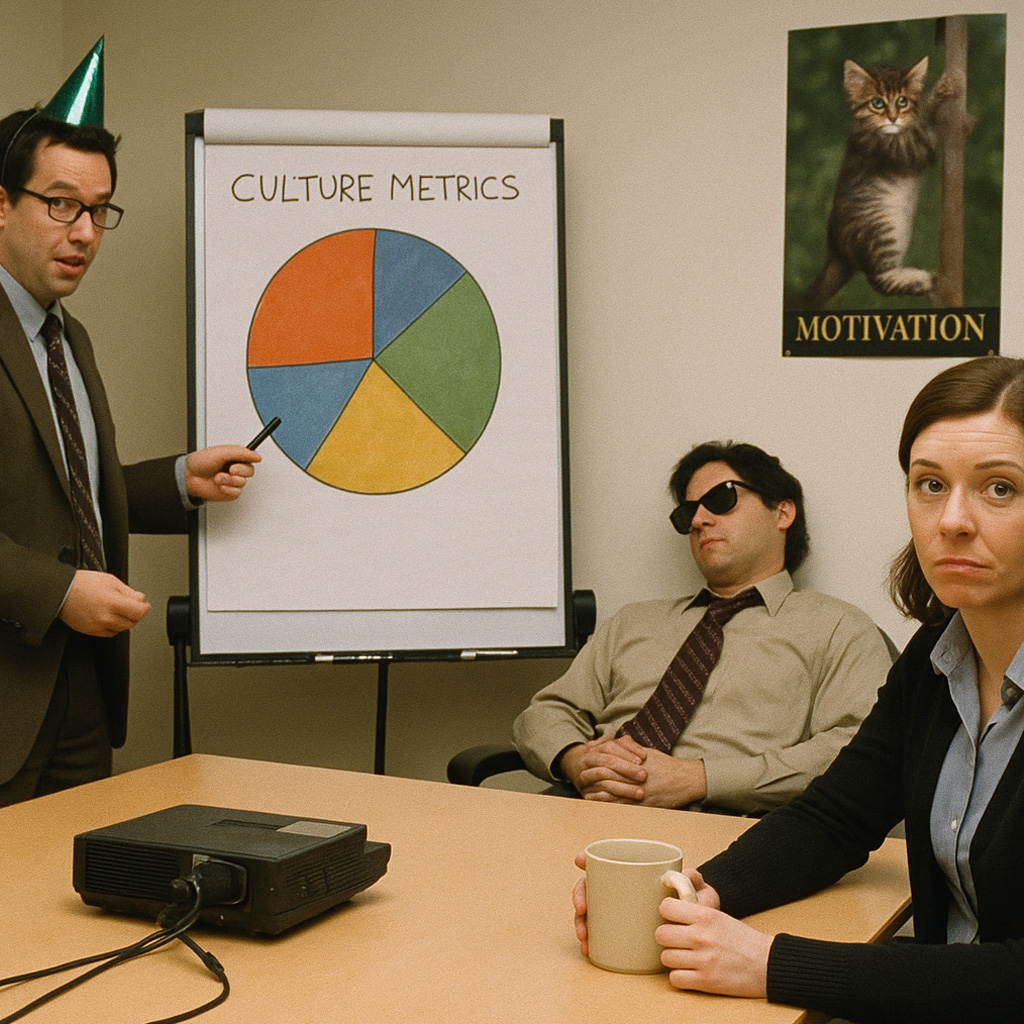Why Your Culture Strategy Should Be Designed for Cognitive Load


Work feels heavier than it used to. Not because we’re lazier or less capable, but because we’re managing more—more apps, more messages, more context-switching, more decisions. Even on days that aren’t packed with meetings, we end up mentally exhausted. The culprit? Cognitive load.
Cognitive load refers to the total amount of mental effort being used in the working memory. And in today’s always-on world, it’s quietly becoming one of the biggest threats to productivity, well-being, and company culture.
Most culture strategies focus on outcomes like engagement, performance, or retention. But if we’re not addressing the underlying fatigue that shapes how people show up, those efforts can feel surface-level. To build a culture where people actually thrive, we need to take cognitive load seriously.
Culture isn’t what’s written on the wall or in the handbook. It’s how people feel during a tough week. It’s how supported someone feels when they’re overwhelmed. It’s whether your systems add clarity or confusion.
When cognitive overload becomes normal, even good people and good intentions start to falter. Feedback becomes harder to absorb. Collaboration turns into friction. Creativity disappears. Small frustrations build up, and soon the workplace doesn’t feel like a place where people can do their best work.
We can’t fix this by telling people to manage their time better. We need to design culture in a way that actively reduces mental strain.
Here’s how.
Few things are more mentally draining than not knowing what’s expected. When people aren’t sure how decisions are made, what the priorities are, or what success looks like, every task becomes a guessing game.
Start by checking your clarity baseline:
Are roles and responsibilities clear, or do they shift without notice? Do teams know how to escalate issues or ask for help? Are priorities revisited regularly, or do new ones pile up?
You don’t need to micromanage. You need to give people the mental space to focus on doing, not deciphering.
Clarity doesn’t just reduce confusion—it builds trust.
Deep work doesn’t happen in five-minute bursts between pings and check-ins. Yet for many teams, that’s all the time they get.
Leaders often talk about productivity, but few actively protect the conditions that make it possible.
If your culture values impact, then you need to create room for it:
Block out meeting-free hours or days across the company. Let employees set their own focus blocks and protect them from interruption. Normalize async updates for status reports or check-ins.
People need time to think. Not in the cracks between calls, but in real, uninterrupted blocks. Protecting that time signals that thinking deeply is part of the job, not a luxury.
We’ve all felt it—using four different platforms to find one document, or filling out a form that feels like it was designed by a robot.
Clunky tools and inconsistent processes are more than an inconvenience. They create friction, drain energy, and make small tasks feel harder than they should.
Take a critical look at your systems:
Where are people repeating steps or entering the same info twice? Are your collaboration tools helping or overwhelming? Do your platforms integrate smoothly, or create extra work?
Sometimes fixing this means streamlining tools. Sometimes it’s reworking a process. Often, it means asking your team what’s actually slowing them down—and listening.
Your culture shows up in how easy it is to get work done.
High-pressure environments tend to reward the fastest responders and loudest voices. But that kind of urgency culture adds up.
People feel they need to respond instantly. Slack becomes a source of stress. Thoughtful decision-making takes a back seat to fast action.
A culture built for cognitive health looks different:
It gives people time to reflect before responding. It values thoughtful questions over instant answers. It allows space for nuance and exploration.
Urgency has its place. But when it becomes the default, it burns people out and narrows their thinking.
Slowing down in the right moments doesn’t hurt performance. It protects it.
Your systems can support cognitive health, but it’s your managers who make it real.
Managers set the tone for how work gets done. They decide which meetings stay and which get canceled. They model whether it’s OK to take a real break or protect your calendar.
Equip them to recognize when the load is too high:
Teach them to ask how people are managing—not just what they’re working on. Encourage weekly check-ins that include “What’s feeling heavy?” Give them tools to help rebalance workloads or revisit priorities.
Too often, we train managers to chase goals. We need to train them to notice strain.
If you want a culture that respects cognitive health, you need to know how people are actually feeling.
Consider expanding how you measure success:
Add regular pulse surveys with questions about clarity, workload, and energy. Track meeting load and message volume over time. Look at how often people are working outside of agreed hours.
This isn’t about policing. It’s about understanding the real cost of doing business—and taking action when the weight gets too high.
Metrics matter, but only if they reflect what’s happening beneath the surface.
Every organization picks up complexity as it grows. But complexity should serve a purpose, not become the norm.
Start simplifying in ways that reduce mental friction:
Shorten your handbook to focus on what actually gets used. Limit the number of platforms people need to check daily. Consolidate meetings and batch updates.
Small changes make a big difference. When people don’t waste mental energy on clutter, they can focus on what really matters.
Less noise, more meaning.
Even the best intentions can go sideways if you’re not careful. A few patterns to avoid:
Assuming more tools equals better support
Adding new apps without removing old ones creates chaos.
Talking about mental health without changing workload
You can’t meditate your way out of burnout.
Creating flexibility without structure
People need freedom, but they also need boundaries. Define what’s expected and what’s optional.
Real change means aligning your actions with your values.
Culture isn’t built in all-hands slides or company retreats. It’s built in the daily choices that shape how work feels.
Designing for cognitive load isn’t about lowering expectations. It’s about creating the conditions where people can meet them.
When you reduce noise, people find clarity. When you simplify systems, people move faster. When you protect focus, people bring their best ideas.
A healthy culture isn’t effortless. But it’s far more sustainable when it works with our brains, not against them.
Create your own survey for almost anything.
The most comprehensive solution for all your insight needs
